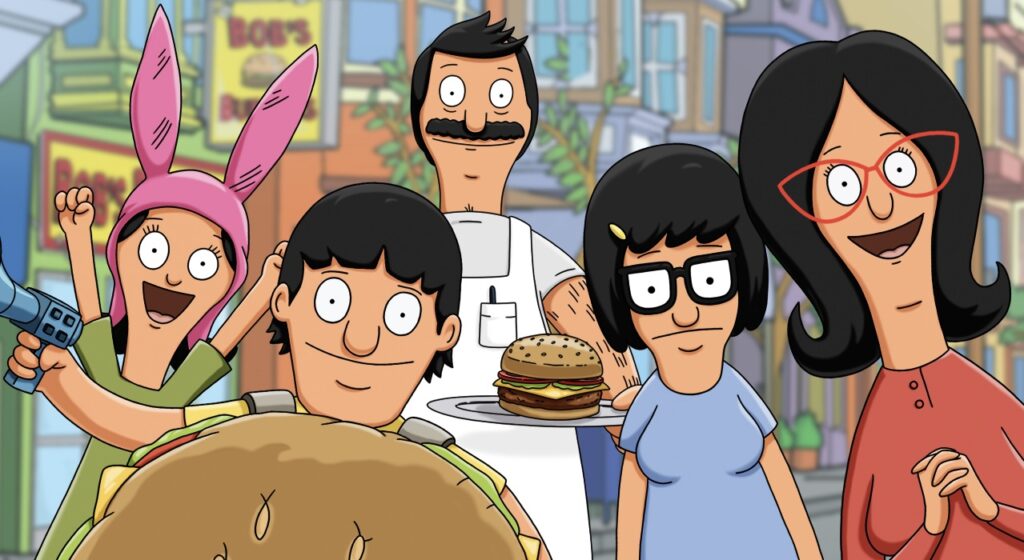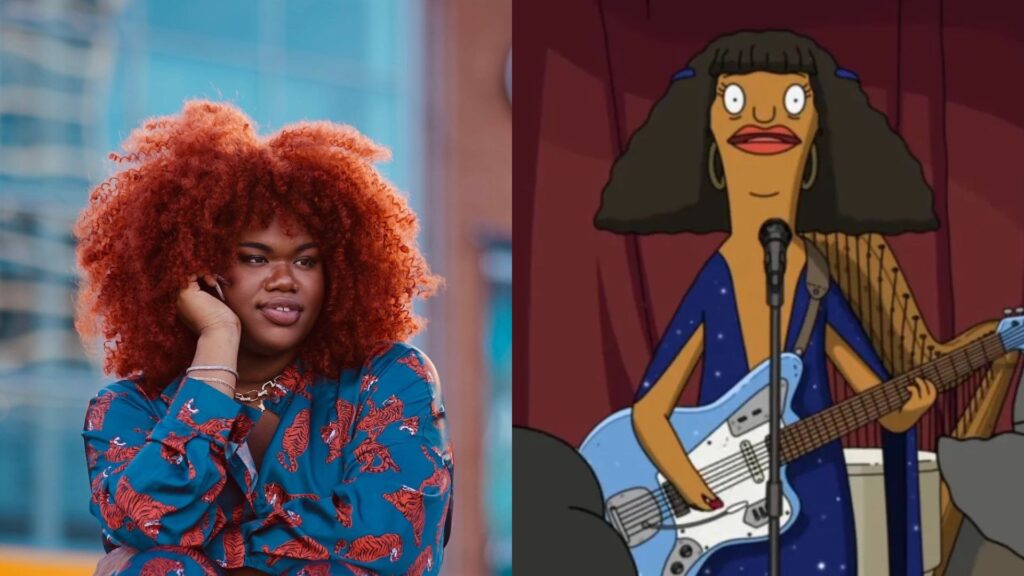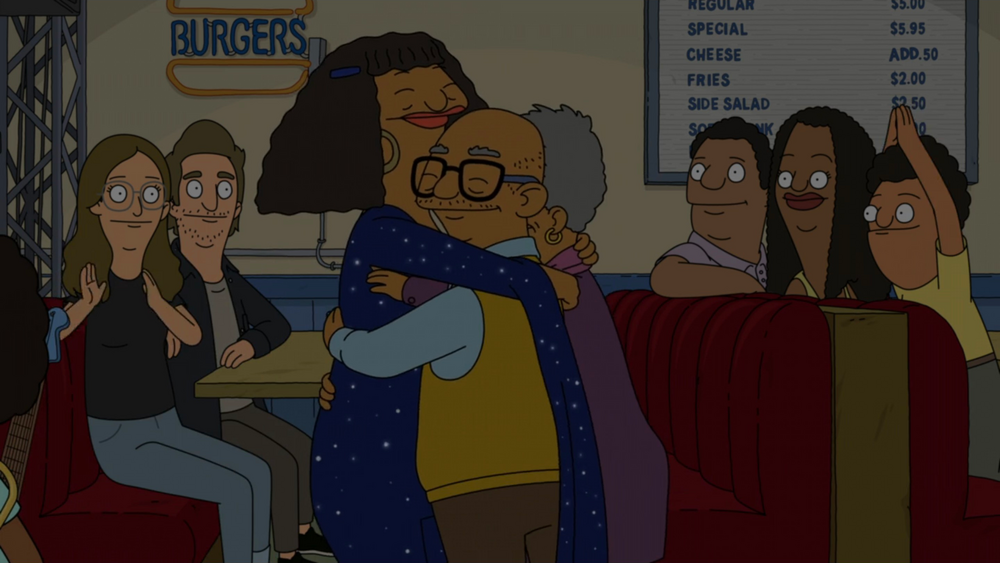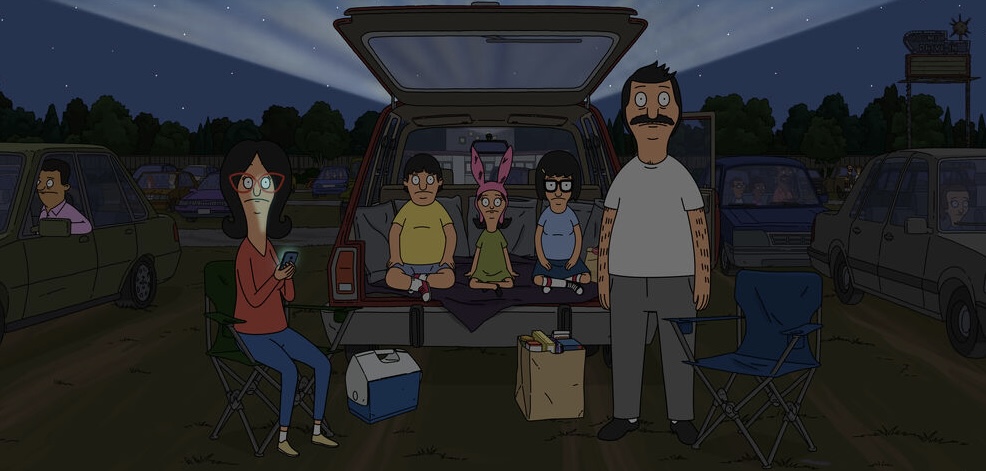
With its 15th season wrapping up in August 2025, Bob’s Burgers continues to prove that long-running animated sitcoms can stay fresh, socially aware, and deeply human. Instead of relying solely on what already works, Season 15 often leans into many contemporary issues, identity, parental pressures, social media, and inclusivity – While keeping the warmth and absurd comedy that defines the Belcher family.
Progress in Representation
One of Season 15’s most significant moments comes in the episode “Hope n’ Mic Night”. Here, the beloved side character Marshmallow, a Black transgender sex worker – originally voiced by David Herman in a stereotyped deep-male voice, is now portrayed by Jari Jones, a Black trans actor, who uses her speaking voice rather than the previous masculine voice.
Marshmallow sings a cover of the 70’s hit Seabird by the Alessi Brothers. Seabird’s lyrics of yearning and isolation have a deeper significance, as a Black transgender sex worker and drag queen, Marshmallow embodies the marginalisation implied in the seabird’s search for home. Yet her unapologetic presence transforms the metaphor, instead of tragic loneliness, it becomes a declaration of belonging, performed on her own terms.

Additionally, Marshmallows parents are shown to be supportive, suggesting that these scenes are not just token; they give Marshmallow depth, dignity, and emotional weight.
This shift reflects a broader cultural moment: the push for trans representation that is authentic rather than caricature. In making this change, Bob’s Burgers demonstrates responsiveness to social criticism.

The show’s editing, voice casting, and storyline here show that representation isn’t just about ticking boxes, but about rethinking character identity and ownership.
Technology, Social Media & Parental Disconnect
Season 15 also engages with the challenges of raising kids in a hyper-connected era. The premiere, “The Tina Table: The Tables Have Tina-ed,” shows Tina trying to save her school news show by interviewing Mr. Frond’s new personality game, a commentary on how digital games or personality generators might shape identity or social status among children and pre-teens. The episode works as a metaphor for how quizzes, filters, and trending content on platforms like TikTok or Instagram are used to negotiate belonging and social hierarchy. Just as Tina’s classmates begin to sort themselves according to the game’s results, children in real life are pressured to perform identities online, with their status often tied to how well they conform to or rebel against the digital persona allocated to them. By filtering these anxieties through Tina’s awkward earnestness, the show highlights both the absurdity and the seriousness of growing up in an environment where social validation is mediated by algorithms and screens.

Similarly, the B story in “Saving Favorite Drive-In” follows Linda as she accidentally sparks drama in a mom PTA group chat. This highlights how even seemingly harmless online conversations can quickly become a minefield of judgment, gossip, and social anxiety. The episode cleverly shows how technology complicates ordinary social relationships, creating misunderstandings that ripple far beyond the screen. Rather than simply poking fun at social media, the story captures the very real pressures of managing reputation, maintaining connections, and navigating group dynamics in a world where communication is constant and visible to many.
Linda’s experience resonates with anyone who’s ever felt the weight of public or semi-public scrutiny. The episode leaves the audience with the sense that social belonging is delicate, and that online missteps – no matter how trivial – can feel amplified. At the same time, it lightly plays on the stereotype that older generations struggle with technology, yet it does so without stereotypical mockery; instead, it portrays Linda’s attempts as both relatable and sympathetic, reflecting a broader commentary on how we all negotiate status, relationships, and identity in the digital age.
Audience & Critical Reception
Critics have generally embraced Season 15 as a return to greater consistency. Screenrant describes the season as “fresh, funny, and grounded in relatable situations.” Even in weaker episodes, the show is praised for still maintaining it’s heart and signature comedic style. Bubbleblabber’s review argues that Season 15 feels “like a delightful course correction” after seasons that wandered too far from the Belchers’ core identity. On Rotten Tomatoes, audience and critic ratings are favourable, with many highlighting the Marshmallow recasting and emotional episodes like “InsomniBob” and “Dog Christmas Day After Afternoon”.
So, does Season 15 Deliver?
Absolutely! It responds authentically to contemporary conversations about identity, representation, and family without sacrificing comedy. The show’s strengths lie in episodes that anchor themselves in their characters, that explore identity (like Marshmallow’s portrayal), and that reflect societal pressures with warmth and absurdity.
While some stories play it safe, and not every episode breaks new ground, the season proves that even after 15 years, the Belcher family still have something to say. Bob’s Burgers remains a rare show that can make you laugh, make you think, and remind you why its world feels like home.